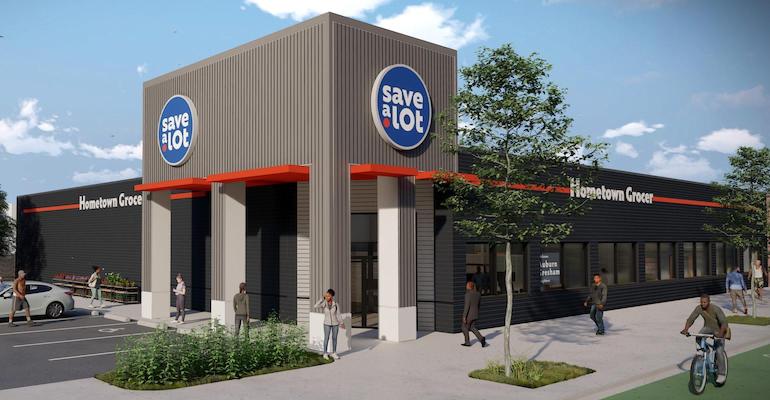Save-A-Lot is the grocer with the best offerings for Supplemental Nutrition Assistance Program (SNAP) shoppers, according to a new report.
Following Save-A-Lot (based in Saint Ann, Mo.) in the rankings is Food 4 Less (Compton, Calif.), Dollar General (Goodlettsville, Tenn.), Winco (Boise, Idaho), and Grocery Outlet (Emeryville, Calif.), according to the report from Chicago-based customer data science company Dunnhumby.
Price Rite (Keasbey, N.J.), Walmart (Bentonville, Ark.), Aldi (Batavia, Ill.), Marcs (Cleveland), and H-E-B (San Antonio) round out the top 10.
Emergency allotments of SNAP benefits stopped back in March, and according to dunnhumby data, grocery revenues are expected to fall by $20 billion compared to 2022 levels.
Other key findings of the recent study include:
- Ninety-two percent of SNAP customers are at or below the poverty line and are likely to be caregivers, working or both. 65% have families with children, 36% are in families with older adults who are disabled, and 41% are working. Cashiers and food service workers are twice as likely as the general population to be on SNAP
- Lower income consumers are just as reliant on the grocery store for satisfying their hunger as shoppers from higher income groups. They shop some of the most common categories — meat, packaged food, dairy — at similar rates to higher income groups. They are less likely to buy fresh produce but more likely to buy frozen produce compared to higher income groups. Lower income consumers rank saving money (63%) as their most important need. In baby care, ready-to-eat, deli, fresh produce and meat, lower income consumers prioritize savings over quality
- Rethink how to define a “loyal” customer. SNAP and lower income shoppers visit fewer grocery banners on average than higher income shoppers (3.6 stores versus 4.5 in an average month), and they give a greater share of their grocery budget to any one retailer. They are therefore more likely to give a retailer their loyalty than higher income shoppers who have bigger grocery budgets. Retailers should look at SNAP and food-insecure customers as a segment to target with actions that appeal to them. Once their loyalty is earned, retailers will be more likely to keep them
- Create appropriate ways of targeting this segment with relevant offers. The USDA advocates for protecting SNAP participants privacy by discouraging the EBT payment type flag as an identifier for marketing purposes. However, retailers can serve the SNAP and food-insecure customer by more thinly slicing their price sensitivity segmentations. For example, take your most price sensitive tier and sub-segment that into three levels. The ultra-price sensitive would be a sub-segment and would be more likely to be food insecure
- Value-tier private brand and targeted communications. A value-tier private brand, aside from being a long-term defense against a discounter like Aldi, should deliver on the basic needs of a product while matching Aldi on price – or whatever retailer has the lowest prices in the market. Retailers should target communications at ultra-price-sensitive customers highlighting the retailer’s value-tier private brand
- Create mass promotions, like extra deep price locks/price freezes, for ultra-price-sensitive customers. Inflation is still a top-of-mind concern for shoppers, and many retailers are still advertising summer price freezes in the spirit of combating inflation. Consider a second, deeper tier for ultra-price-sensitive customers – instead of locking/freezing prices, lower them and keep them there for the duration of the promotion
- Make health and wellness products more accessible. If SNAP customers are more likely to forgo medical care and be unable to afford enough nutrient dense food, retailers should consider ways to make over-the-counter medicine and vitamins/supplements more accessible to the ultra-price sensitive customers





